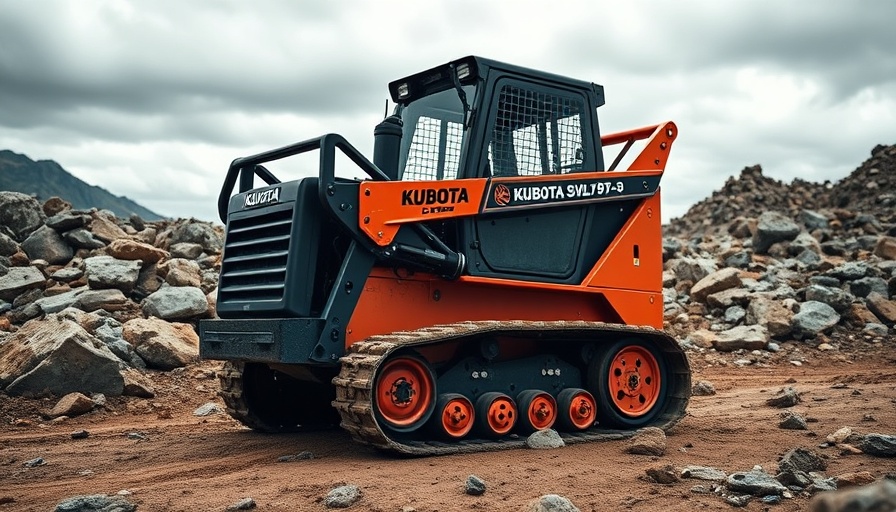
Unveiling the Future of Compact Track Loaders: The Kubota SVL97-3
The world of construction equipment is witnessing a game-changer with Kubota’s latest innovation, the SVL97-3 compact track loader. The introduction of this next-generation loader at the World of Concrete earlier this year is backed by robust features, enhanced performance, and improved operator experience. In this breakdown, we’ll explore what sets the SVL97-3 apart in the competitive landscape of compact track loaders (CTLs).
Performance that Leads the Pack
Constructed to better manage heavy loads and challenging terrains, the SVL97-3, with a 96.4-horsepower diesel engine, boasts an 8% increase in rated operating capacity. This brings it up to about 3,500 pounds as compared to its predecessor, the SVL97-2. The CTL is designed for improved workflow, featuring a 20% increase in cycle times due to boosted arm and bucket hydraulic speeds.
Additionally, the travel speed has been elevated to 8.4 mph, making it one of the fastest models available in the market today. Jerry Corder, Kubota’s product manager, emphasizes that the innovations in hydraulic response and cycle speed translate to a more efficient working experience, allowing operators to move dirt and attachments much quicker than before.
New Innovations for Enhanced Operator Comfort
The SVL97-3 has taken operator comfort and safety into consideration with several groundbreaking features. The new design includes a one-piece cab that substantially reduces dust and noise, creating a more pleasant work environment. Operators will appreciate the heated air-ride seat, adjustable HVAC settings, and the addition of a 7-inch LCD touchscreen that effectively controls functions and displays a rearview camera.
One of the standout innovations in the SVL97-3 is its passcode-enabled keyless start system that can hold up to 51 unique codes. This allows multiple operators to personalize their settings, streamlining the workflow for companies with shared equipment.
Serviceability: Easier Maintenance Equals Less Downtime
Understanding that maintenance can greatly affect productivity, Kubota has designed the SVL97-3 with user-friendliness in mind. The new swing-out radiator design allows for easy access to the engine, filters, and batteries, making routine maintenance quicker. As Corder noted, “Accessing the engine becomes a straight shot when the radiator swings out 90 degrees.” Coupled with the KubotaNow telematics system, operators are equipped to monitor equipment health and performance even remotely.
Applications and Utility: Built for Versatility
The SVL97-3 has been engineered with versatility at its core, allowing it to adapt to various attachments for different project types. Construction professionals can utilize high-flow attachments without worry, thanks to the ability to directly adjust hydraulic flow from the cab. This means operators can now prevent machine stalling and make quick adjustments on the fly, something that was not as efficient with earlier models.
Future Trends in Compact Track Loaders
As the construction sector continues to evolve, the demand for efficient and powerful compact track loaders is expected to rise. Innovations like those showcased in the SVL97-3 not only highlight Kubota's commitment to advancing technology but also set a precedent in the industry. Operators and contractors can look forward to a future where accessibility, performance, and comfort are no longer trade-offs but rather integral aspects of construction equipment.
Conclusion: The SVL97-3's Place in the Market
With its impressive features and user-friendly designs, Kubota’s SVL97-3 is positioned as a leading choice for contractors seeking reliability and efficiency in compact track loaders. Whether you are moving heavy loads on a construction site or gardening on a larger landscape, the SVL97-3 promises to deliver results with comfort and ease. As more contractors look to leverage technology for better productivity and performance, embracing machines like the SVL97-3 will become a crucial element in staying ahead in a competitive market.
If you're ready to explore the capabilities of the new SVL97-3 for your construction projects, visit your nearest Kubota dealership this spring or check out their website for more information!
 Add Row
Add Row  Add
Add 




Write A Comment